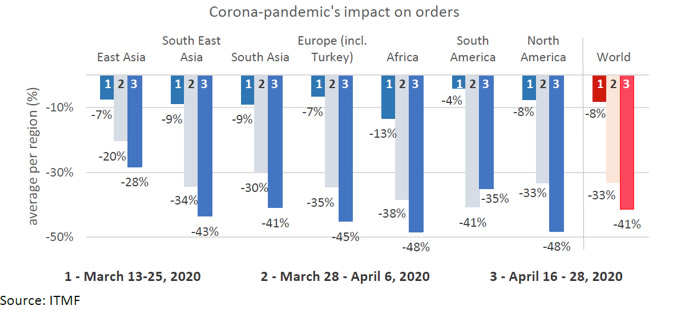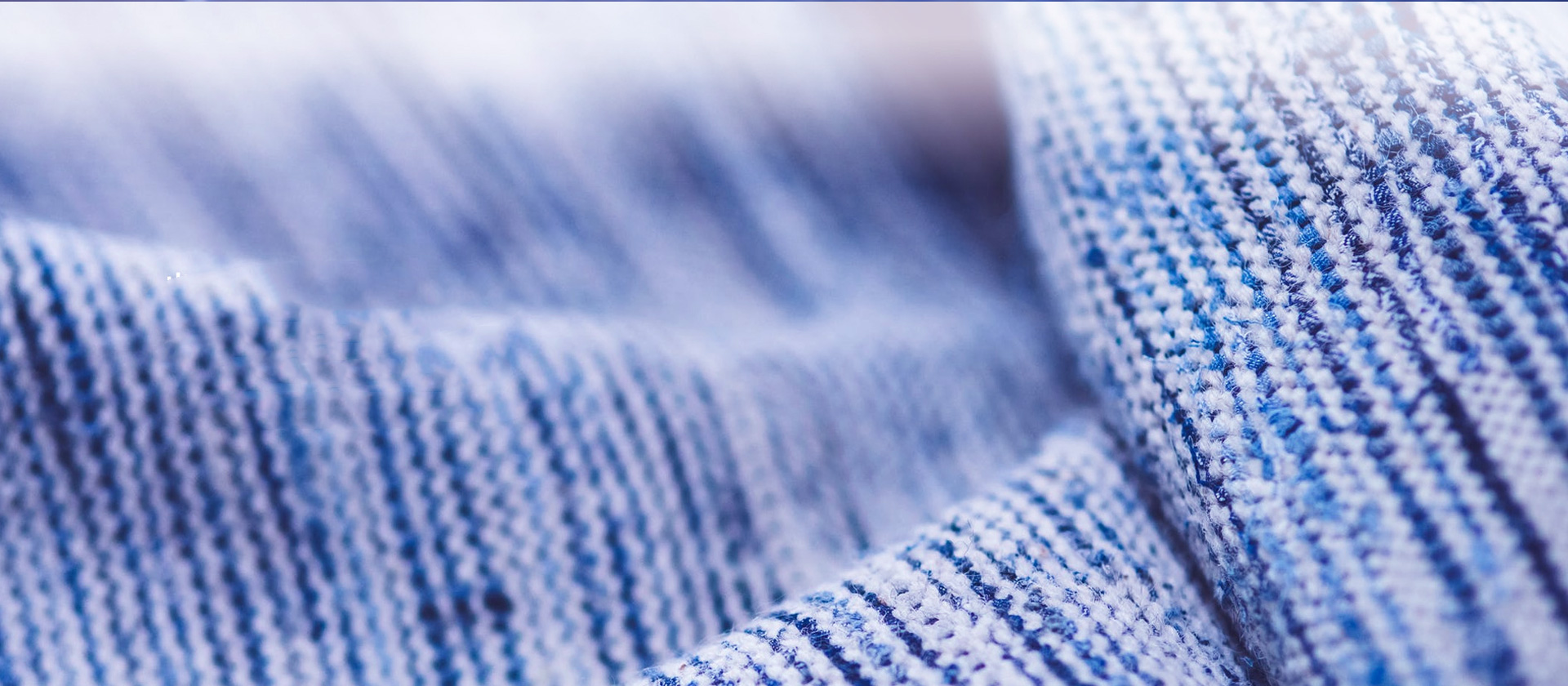International Textile Federation Announces: The Third Global Survey of the Impact of the New Crown Epidemic on International Textile

Since mid-March, offline sales of textiles have been suspended in most important parts of the world, especially in important markets such as Europe and the United States. The global textile supply chain has been extremely disrupted, and the extreme uncertainty of textile companies about future development has increased. In this environment, the International Textile Federation launched the third new crown epidemic impact survey in late April. A total of 600 companies from Africa, the Americas, Asia, and Europe (including Turkey) participated in the survey. Recently, the International Textile Federation released the third survey report on the impact of the global new crown epidemic on international textiles.
Order status
The number of cancelled and/or delayed orders rose to 41%
Since the first survey on the impact of the International Textile Federation’s new crown epidemic in March, the number of cancelled and postponed orders worldwide has increased from 8% to 41%. The third survey confirmed the expectations of the first and second surveys that the crisis is global and has continued to deteriorate in the past four weeks. Companies in all regions have reported a large number of cancellations and delays. Only a few companies quickly adapt to changing situations by producing personal protective equipment (PPE).
It is worth noting that orders in East Asia fell by 28%, significantly lower than all other regions (41% and above). It can be assumed that this region was first affected by the new crown epidemic and first recovered from the crisis. In particular, China and South Korea have successfully controlled the epidemic. In the past few weeks, most Chinese textile companies have increased their output substantially. At the same time, offline retail stores also reopened, and consumption in East Asian countries began to recover gradually. However, it remains to be seen how the consumption situation will change.
2020 turnover forecast
Expected to drop by an average of 33%
Compared with 2019, global companies expect the average turnover in 2020 to fall by 33%. Compared with the second survey, the company's expectations for the prospects are more pessimistic. European companies expect that their turnover in 2020 will drop "only" by 22%, which is significantly better than the 33% reported in the second survey. Companies in East Asia are expected to reduce their turnover by 26%, which is close to the data reported in the second survey (24%). On the other hand, Southeast Asian and South Asian companies' expectations of turnover have deteriorated significantly. The impact of the epidemic was relatively late in these areas, so the impact of the epidemic was delayed. Compared with 2019, the turnover of Southeast Asia and South Asia is expected to drop to 38% and 31% in 2020, respectively. Africa, South America and North America did not expect much change in turnover.
Challenges and difficulties
Uncertainty in the future puts heavy pressure on enterprises
At present, the biggest challenges and difficulties facing the global textile industry are how long the epidemic situation will last, and when trade flows will return to normal.
Among them, ensuring sufficient trade liquidity is the most concern of most enterprises. On the one hand, because many customers cancel and postpone orders, producers cannot get cash flow. On the other hand, the resumption of work of enterprises in various countries is not synchronized, which affects the normal operation of the global supply chain.
In the medium and long term, future uncertainty is a big issue. Many companies want to know what the post-epidemic era will look like. What will the recovery look like? Will consumer spending recover as quickly as before? Will consumer behavior change because of this crisis? Unable to predict how long this crisis will last, uncertainty in the future puts heavy pressure on companies. Many orders were cancelled or postponed, and few new orders. Will there be a second wave of COVID19 virus infection in autumn and winter this year, leading to a second blockade?
At the same time, due to the increase in uncertainty, it is difficult for companies to plan production, and it is becoming more and more difficult to retain jobs and retain talent. They are worried that they will not be able to prepare for the recovery of demand and cannot retain loyal customers. The current lack of sales is further leading to an inventory backlog in many companies, which may bring negative pressure on future pricing.
Seeking opportunities in a crisis
Rethink the current industrial organization
The survey shows that many companies are currently considering diversification, with a focus on medical textiles. In fact, the huge demand for personal protective equipment (PPE) has provided some companies with a new market.
In addition, due to the dependence on foreign raw material supply and market demand, enterprises in some countries are considering concentrating production and streamlining their organizations and production processes; reconsidering their dependence on global supply chains, and promoting enterprises to recognize the importance of local/regional supply chains This will change the current pattern of the textile supply chain.
Maximum expectation
Win-win cooperation, overcome difficulties
In order to combat the epidemic, many countries around the world have provided support policies for domestic enterprises, such as tax deferral, social security payments, low-interest rate loans and deferred repayments. In some countries where the government provides electricity, companies can postpone payment of electricity bills.
In Europe, a very important tool for government-supported companies is short-term work plans. The basic principle is that companies lacking demand can reduce working hours, and a certain percentage of employees’ salaries can be paid by unemployment insurance. In this way, the enterprise can retain employees and only need to pay the wages of the reduced working hours. At the same time, compared with the original income, the employee's income level has not dropped significantly (due to unemployment insurance as a supplement).
With the gradual control of the international epidemic, companies in many countries hope to learn from China’s experience in resuming work, and hope to resume work on May 11 or the end of May. The unilateral cancellation of orders by retailers and brands will gradually improve, which will boost international The structural adjustment of textile suppliers, win-win cooperation and overcome difficulties together!
-
Tel
17318817300
17318817305 -
E-mail
jy@highbery.cn
mhm@highbery.cn
 Wechat
Wechat Tik Tok
Tik Tok
Keywords: Henglibao graphene graphene PA6



Address: Factory Building 12A East, West Taihu Graphene Technology Industrial Park, Wujin District, Changzhou City, Jiangsu Province
苏ICP备20019413号-1 Powered by:www.300.cn Changzhou Copyright © 2019 Highbery Nano New Material
National Service Hotline

 Subsidiaries
Subsidiaries






 The world's first industrial mass production
The world's first industrial mass production